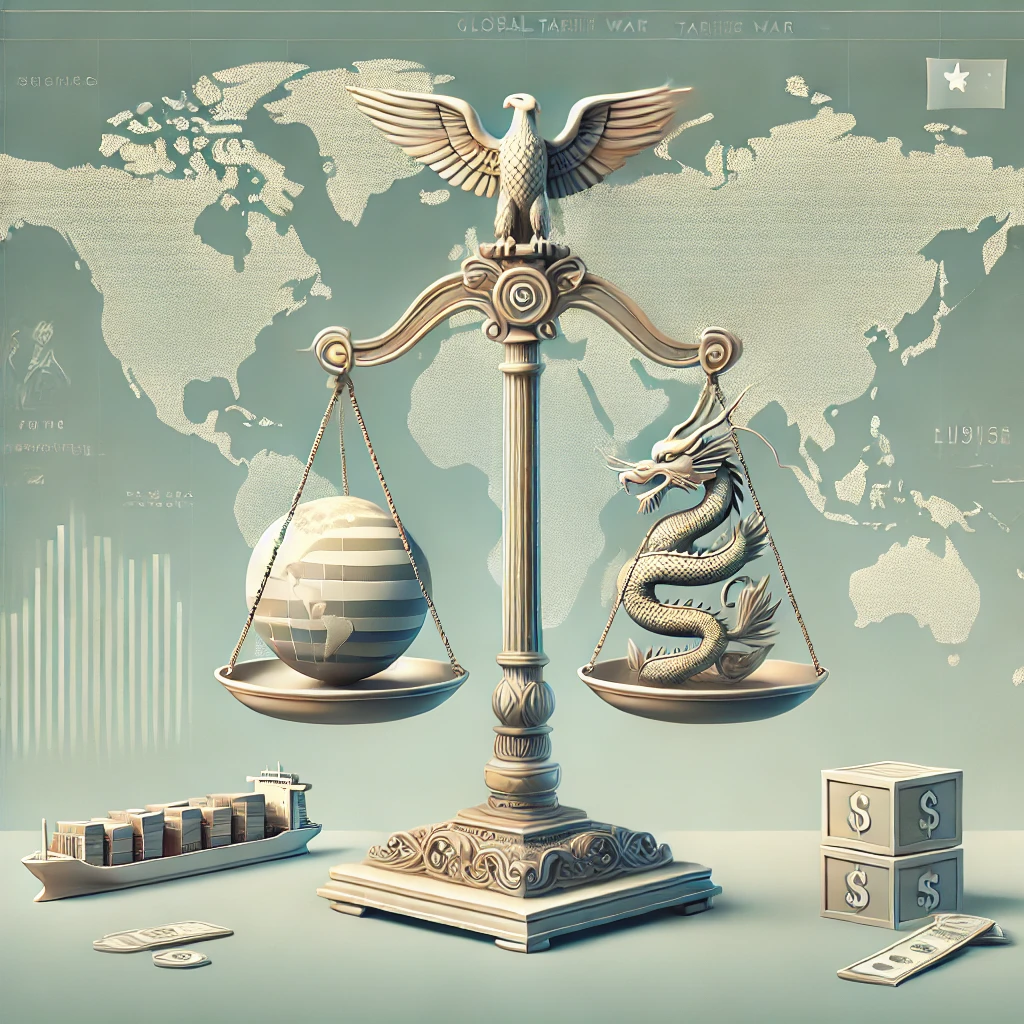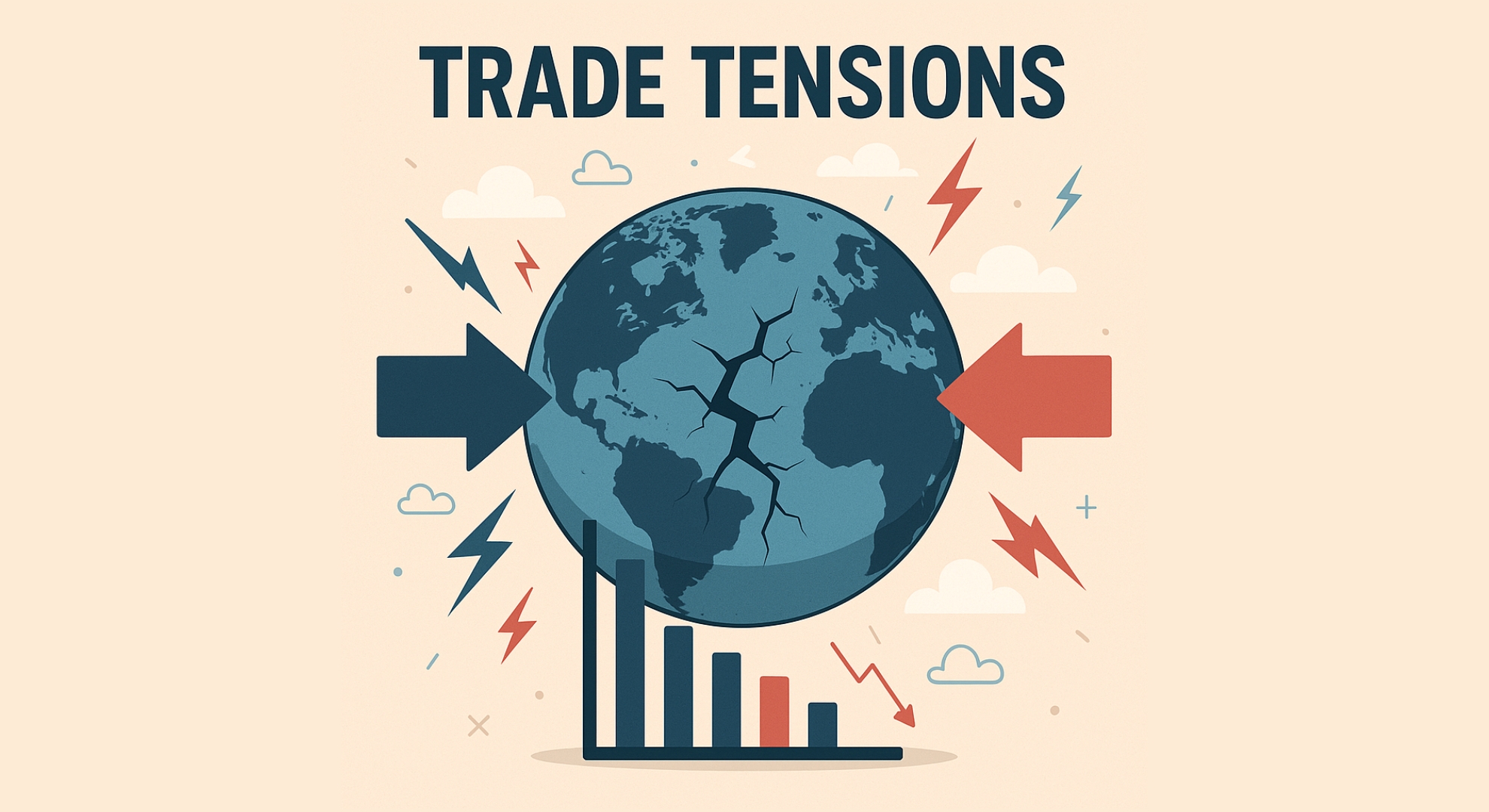Global Tariff Wars Impact on Indian Consumers
Global Tariff Wars Impact on Indian Consumers
Over the last few years, global trade has witnessed a radical overhaul than ever before. With the increasing integration of the global economy, trade disputes between leading global powers such as the United States and China can generate widespread economic repercussions across the transnational setting. From tariff hikes to tit-
for-tat trade battles, countries are fighting fire with fire over economics, not ethics—and it has moved beyond being just a headline in the global news.
The macroeconomic implication, is felt in countries like India, where the consequences of these tariff wars often hit hardest not at boardroom tables, but in the homes of the average citizen. The repercussions of global tariff wars are gradually manifesting in the Republic of India, with discernible effects on the broader Indian
populace or the common man.
Before diving into how this tariff war will impact the common man, it’s important to grasp the background first.
A) What exactly is a tariff war, and why is it happening?
A tariff is a government-imposed tax on goods or services brought in from other countries. A tariff war occurs when two or more countries keep increasing these import duties on each other’s goods, making products more expensive and trade relationships more hostile.
1) How U.S. Started the Tariff War
The tariff war began in early 2025 when U.S. President Donald Trump introduced sweeping tariffs to address trade imbalances. Executive Order 14195 imposed a 10% baseline tariff on Chinese imports, citing fentanyl concerns, later escalating to 145% by April. Most goods faced a 25% tariff, with Canadian energy facing 10% tariff. Using the IEEPA, the U.S. also extended tariffs to countries India, Japan, South Korea, and the EU and many other countries.
2) China’s Retaliatory Measures
In response to U.S. tariffs, China imposed retaliatory duties of up to 125% on U.S. goods, focusing on soybeans, pork, and dairy. China also halted TikTok sale talks and imposed licensing requirements on rare earth exports vital to high-tech industries.
3) Canada and Mexico’s Response to the Tariffs
Canada imposed retaliatory tariffs on over $100 billion in U.S. goods, risking job losses and increased consumer prices. Mexico targeted U.S. agriculture, with potential to shrink its GDP by 4% if the tariffs persist.
4) Global Outlook on the Tariff Tantrums
The U.S. launched the tariff war to protect its economy, challenge China’s trade practices, and cut its trade deficit. Viewing the tariffs as unfair, other nations responded by imposing retaliatory tariffs, turning economic tensions into a full-scale global tariff war.
Understand the timeline of U.S.- China Tariff war in detail— China Tariffs Trump Timeline

B) The Global Game, Local Consequences
India may not be a direct player in major tariff disputes, but it feels the impact. As a key importer of fuel, technology, and industrial components, global tariffs and supply chain disruptions significantly affect Indian markets, businesses, and consumers. Let’s break down exactly how these trade tensions are impacting the common Indian citizen:
1) Everyday Essentials May Cost More
Tariffs impact not only luxury imports but also tend to increase the prices of essential goods. India imports a significant amount of:
- Electronics & components (phones, laptops, TVs)
- Machinery & industrial parts
- Edible oils
- Fertilizers & chemicals
When countries implement tariffs on these items, Indian importers bear higher costs, which are typically transmitted to the common man and consumers like you and me. For example: A smartphone that previously retailed for ₹20,000 might now be priced at ₹23,000. This isn’t just a luxury issue; it’s a problem affecting the middle class.
2) Farmers and Rural India will be Hit
Indian farmers are already facing challenging conditions—both in terms of weather and economics. If other countries impose tariffs on Indian exports, it could exacerbate these difficulties. Farmers may face reduced demand and declining prices for their produce, further diminishing their already limited profit margins.The ripple effect? Reduced rural income, decreased consumption, and ultimately, a slowdown in economic growth.
3) Jobs in Jeopardy
Industries such as manufacturing, textiles, and automotive components are significantly dependent on exports. As tariffs lead to increased costs and a contraction in international markets, businesses
within these sectors may face several challenges. They might experience reduced profit margins due to higher expenses. They may:
- Cut down production
- Lay off workers
- Freeze hiring
Limited access to foreign markets can restrict sales opportunities, prompting companies to rethink their supply chains and explore local sourcing or alternative markets. This shift may disrupt operations, threaten employment, and slow growth in key industries—impacts that are most acutely felt by low-income workers and blue-collar job seekers.
4) Fuel prices are likely to experience significant volatility
Given the sensitivity of oil prices to geopolitical tensions, any disruption in energy trade routes or imposition of tariffs on oil exports could cause a sharp rise in India’s oil import costs. Since we import over 80% of our crude oil, even a small change in pricing can lead to:
- Increase fuel costs at the pump
- Spike transportation and delivery costs
- Raise the price of food, goods, and travel
5) Online Shopping Might Not Be Cheaper Anymore
The ease of purchasing inexpensive gadgets or lifestyle products online may suffer. Many e-commerce platforms rely on Chinese or other foreign goods, and tariff hikes make them more expensive or harder to get.
Expect:
- Fewer options
- Delayed deliveries
- Higher prices of “cheap” electronics
6) Indian Consumers May Face Constraints in Travel and Lifestyle Choices
If you are planning for vacation the be prepared for potential increase in airfare as aviation fuel costs rise. Imported products such as gourmet foods, wines, and cosmetics may also become more expensive. In effect, global tariff escalations could transform everyday comforts into occasional luxuries.
7) Sequential Economic Effects of Rising Prices
When input costs go up—whether due to tariffs on raw materials, fuel, or transport—the result is predictable: inflation. It results in:
- Groceries getting costlier
- Household goods inching up
- Clothing, even personal care products can become more expensive
Your salary levels remain the same, but your expenses will increase substantially.
C) Responding To the Issue, What Can Be Done?
Although individual consumers have limited influence over global trade policies, being informed is a crucial first step. The following measures may prove beneficial over time:
- Support local goods: It reduces dependency on volatile imports.
- Encourage diplomatic engagement: It is essential for India to
strategically navigate and maintain balanced trade relationships. - Demand price transparency: Consumers should know why costs are
rising.
D) Conclusion
Trade wars may begin in boardrooms and government halls, but their impact is felt in Indian homes, wallets, and on dinner tables. While nations fight for economic dominance, it’s the common man who pays
the real price—through everyday sacrifices like buying less nutritious food, delaying essential purchases, or cutting back on fuel use. The true cost goes far beyond GDP and trade charts; it’s seen in the daily struggles of millions.
In an interconnected world, no one is truly isolated. When tariffs go up, so does the cost of living, even thousands of miles away. It’s time we pay attention—before we’re forced to pay even more.
Disclaimer: The views expressed in this article are for informational purposes only and do not necessarily reflect the official policy or position of any organization. If you have concerns or believe there are factual inaccuracies, please write to us at info@primejournal.in or Contact Us.
I am Ramani Mahajan currently an undergrad student pursuing a bachelors in business administration. I have a keen interest in writing about business, technology and current affairs.








